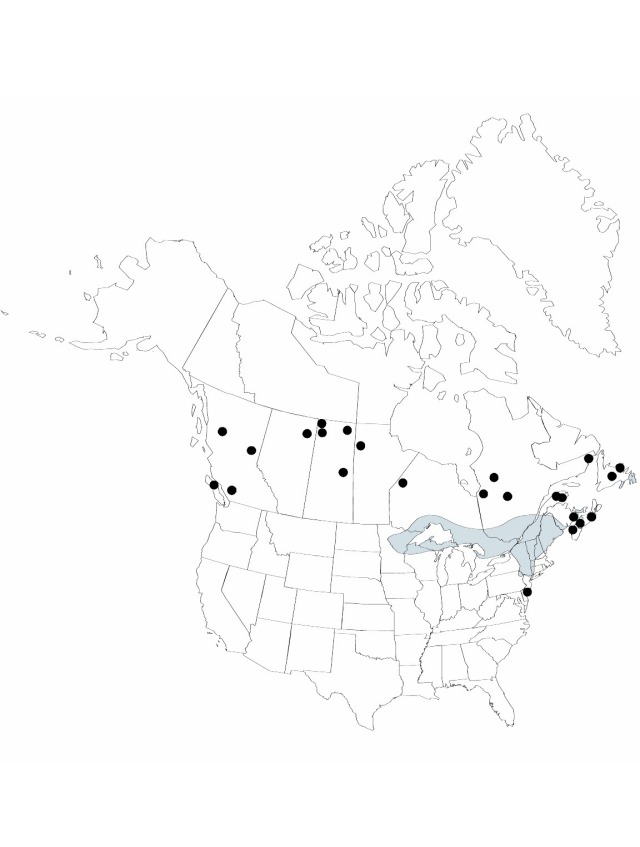Sparganium fluctuans
Rhodora 7: 60. 1905.
Plants limp, to more than 1 m long; leaves and inflorescences floating. Leaves limp, unkeeled, flat, mostly 0.6–1 m × 4–10 mm. Inflorescences: rachis 0–2-branched, distal part erect at water surface; bracts ascending, not inflated at base; pistillate heads 0–2 on main rachis, 1–2 on secondary rachises, axillary or supra-axillary, often some contiguous or nearly so, especially in fruit, sessile, 1.5–2.3 cm diam. in fruit; staminate heads 3–6 on main rachis, 1–4 on secondary rachises, contiguous or not, but not contiguous with distalmost pistillate head. Flowers: tepals often with prominent apical dark spot, apically erose to fimbriate; stigmas 1, linear-lanceolate. Fruits eventually dark reddish-brown, dull, stipitate, elliptic to obovoid or fusiform, body not faceted, sometimes constricted near equator, 2–5 × 1.5–2 mm, tapering to beak; beak curved, 2–3.5 mm; tepals borne at middle of fruit stipe, basally adnate to stipe, reaching about nearly to equator. Seeds 1.
Phenology: Flowering summer (Jul–Aug).
Habitat: Quiet, cold, acidic -to -neutral oligotrophic waters to 2 m deep but usually less, abundant in some areas but not in others, sometimes covering the water with its strap-shaped leaves
Elevation: 0–600 m
Distribution

Alta., B.C., Man., N.B., Nfld. and Labr. (Nfld.), N.S., Ont., P.E.I., Que., Sask., Conn., Maine, Mass., Mich., Minn., N.H., N.J., N.Y., Pa., Vt., Wis.
Discussion
The tepals are usually adnate to the fruit stipe for about half their length, but in our other species they are free from it.
Sparganium fluctuans is not known to hybridize. When vegetative, it is sometimes confused with S. angustifolium, but the floating leaves of that species are usually less than 5 mm wide and plano-convex. Sparganium fluctuans is more robust than the grasslike S. natans, with which it sometimes grows.
Selected References
None.
Lower Taxa
"elongating" is not a number.